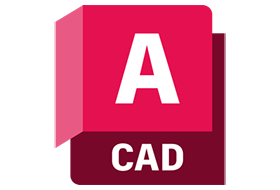Dancing into the Digital Domain ? An Overview of Fusion Studio
The Industry Palette
Stepping back, the visual effects (VFX) industry is much like a sprawling canvas of innovation, with artists painting visions that propel viewers to new realms. It’s within this vivid tapestry that Blackmagic Design Fusion Studio finds its rhythm.
The VFX industry isn’t a solo act; rather, it’s a choreographed dance of several software tools each trying to outshine the other. Titans like Adobe After Effects, Nuke, and Autodesk’s Smoke have been swaying to the industry’s rhythm for years, dictating the tempo for emerging software.
The Market’s Evolution
Over time, the market has seen a dramatic evolution. What was once a niche, exclusive domain dominated by high-end studios, has democratized, welcoming a diverse range of creators. The bar to enter? Lowered. The tools to create? More accessible than ever.

First Steps with Fusion Studio
Remember the euphoria of your first dance? My first tango with Fusion Studio was somewhat similar. An intimidating interface at first glance, but as the layers unraveled, the simplicity was evident. And while it does take a few spins to truly understand its core, the seamless integration and high-quality rendering are more than rewarding.
The initial interface, while intimidating, actually streamlines the workflow. Nodes instead of layers? Revolutionary! This nonlinear approach does wonders for complex projects.
Fusion Studio’s Tango ? Dancing Alongside its Contemporaries
Side-by-Side with the Contenders
It’s not just about mastering your steps; it’s about how you fare in a dance-off. When Fusion Studio is pitted against its contemporaries, the dance gets interesting.
- Adobe After Effects: Arguably the most recognized name in the VFX world, After Effects thrives on its vast user community and integration within the Adobe suite. Fusion Studio, on the other hand, showcases its node-based approach which, for many, can be a game-changer in managing complex projects. However, for those accustomed to AE’s layer-centric world, there’s a learning curve.
- Nuke: Both Nuke and Fusion Studio adopt a node-based interface, but Fusion’s free version gives it an edge for beginners and independent creators. Yet, when diving deep into professional-grade compositing, many lean towards Nuke for its depth and breadth of capabilities.
- Autodesk’s Smoke: More an editor than a compositor, Smoke finds its prowess in streamlined video editing with integrated VFX. Fusion, while equipped with basic editing tools, is truly a compositor at heart.
What Left Me Wanting More
While Fusion Studio dances elegantly for the most part, there were times I wished it had a different pair of shoes. The text and typography tools feel somewhat underpowered compared to competitors. For motion graphic artists, this can be a bit restrictive. The software also demands quite the computational power, which means if your hardware isn’t up-to-par, expect some hiccups.

Who’s it For and Who Might Pass?
If you’re a film creator, VFX professional, or just someone looking to dive deep into the world of compositing ? Fusion Studio is your dance partner. Its capabilities in 3D integration, particle systems, and keying are top-notch.
However, if you’re primarily into motion graphics or have a machine that’s not high-end, you might find programs like After Effects or even Blender more to your tune. Additionally, studios deeply entrenched in workflows with Nuke might find the switch to Fusion a challenging pivot.
Setting the Stage – Fusion Studio’s Hardware Waltz and Industry Impact
System Requirements
- Minimum Requirements:
- OS: Windows 8.1 or higher, macOS 10.14.6 or higher, CentOS 7.3 or higher
- CPU: Intel Core i5 or equivalent
- RAM: 16GB
- GPU: OpenCL 1.2 or CUDA 10 capable graphics card
- Storage: SSD with 1GB free disk space
- Display: 1920×1080 or higher resolution
- Recommended Requirements:
- OS: Windows 10, macOS 10.15 or higher, CentOS 7.6 or higher
- CPU: Intel Core i7 or equivalent
- RAM: 32GB or more
- GPU: NVIDIA/AMD graphics card with at least 4GB of VRAM
- Storage: SSD with 5GB free disk space
- Display: 2560×1440 or higher resolution
Reflecting on Fusion’s Footprints in the Sands of Time
The VFX industry has always been dynamic. Software like Fusion Studio challenges the norms, pushing the boundaries of what’s possible. Its introduction sparked a renewed interest in node-based workflows, and its accessible pricing structure has enabled many budding creators to access top-tier compositing tools. This is more than a product; it’s a statement to the industry ? high-quality VFX tools shouldn’t break the bank.

Personal Recommendation
Dance, they say, is an expression. If VFX is your dance, then Fusion Studio could very well be your stage. My journey with it has been filled with learning curves, moments of awe, and times of frustration. But isn’t that what any profound experience offers?
Would I recommend Fusion Studio? Absolutely. Especially if you’re someone who’s willing to invest the time to truly explore its vast capabilities. If you’re already accustomed to a layer-based software and are reluctant to change, remember this: every dance form is unique, but it’s the rhythm that binds them.
The Grand Finale
Blackmagic Design Fusion Studio isn’t just another software in the VFX world; it’s a catalyst, a revolution, an invitation to see beyond the usual. It’s got its quirks and nuances, but doesn’t every masterpiece?
Whether you’re a beginner taking your first steps into the VFX dance or a seasoned professional, Fusion Studio has something to offer. It’s a testament to how innovation, when done right, can challenge industry titans and pave the way for a new era.



